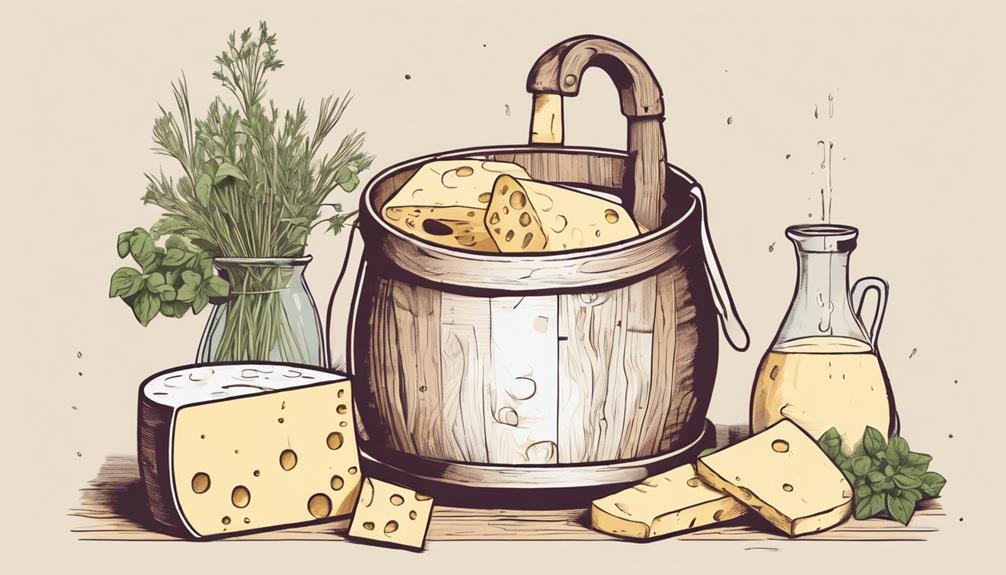How To Become More Self-Sufficient Without Starting a Full-Blown Farm…
Want to start preserving your harvest, making your own soap, or building a backyard root cellar — but not sure where to begin? “Homesteading Advice” gives you instant lifetime access to 35+ practical homesteading books on food preservation, veggie gardening, DIY natural cleaning products (save over $250 per year with this skill alone), brewing, off-grid energy, and a whole lot more…
Click Here To Check It Out Now!
“Hey there! I’ve been trying my hand at cheese making here at my small farm in Vermont, USA. However, I’m running into some issues with the final texture and flavor of my cheese. I’m starting to think it might have something to do with the quality of milk I’m using. Could you shed some light on how the quality of milk affects cheese making? Appreciate your insight!” Thanks, Robert, Vermont, USA.
How Does The Quality Of Milk Affect Cheese Making?
Hey Robert! It’s fantastic to hear that you’re getting into cheese making on your farm. Let’s tackle your question about how the quality of milk can affect your cheese. There are several factors to consider but I’ll break them down in a way that should help you identify and tweak aspects of your milk to improve your cheese.
Fat Content
The fat content in milk is a major player in determining the texture and flavor of your cheese. Higher fat content generally results in creamier and richer-flavored cheese. But it’s a balance – too much fat can make the cheese greasy.
- Whole milk vs. Skim milk: Whole milk has a high fat content, which is excellent for cheeses like Brie or Gouda. Skim milk may produce harder cheeses but you’ll miss out on that creamy richness.
- Standardization: For consistency, larger cheese producers often standardize milk by adding or removing fat to achieve a specific percentage.
Protein Content
Protein levels in milk significantly impact the cheese yield and texture. Casein is the primary protein in milk and it’s essential for curd formation.
- Protein to Fat Ratio: Ideally, a higher protein-to-fat ratio is beneficial for hard cheeses like Parmesan, whereas a balanced ratio is better for softer cheese.
- Quality of Proteins: Factors like the breed of cow and its diet influence the quality of proteins in milk. Grass-fed cows tend to produce milk with better protein quality compared to grain-fed ones.
Microbial Quality
Microorganisms in milk play a critical role in the cheese-making process. They help in fermenting lactose into lactic acid, which acidifies the milk and forms curds.
- Raw Milk vs. Pasteurized Milk: Raw milk contains natural bacteria beneficial for cheese making. However, it comes with risks of harmful pathogens. Pasteurized milk is safer but may require the addition of starter cultures.
- Starter Cultures: These are added to pasteurized milk to introduce necessary bacteria. The type of culture can greatly influence the final cheese flavor and texture.
Somatic Cell Count (SCC)
Somatic cells are white blood cells present in milk, typically increasing when the cow has an infection. High SCC impacts milk quality negatively, affecting cheese yield and flavor.
- Indicators: A higher SCC can indicate mastitis in cows, leading to poor-quality milk.
- Impact on Cheese: High SCC can cause off-flavors and lower cheese yield due to the breakdown of milk proteins.
Seasonal Variations
Seasonal changes can affect milk composition, impacting cheese making.
- Spring and Summer: Fresh pasture can lead to richer and more flavorful milk, benefiting cheese flavor.
- Winter: Stabled cows fed on silage or hay might produce milk with slightly different characteristics, impacting the cheese’s texture.
Animal Diet and Welfare
The diet and overall health of the cows significantly affect milk quality.
- Grass-fed vs. Grain-fed: Grass-fed cows typically produce milk with higher levels of beneficial fatty acids like Omega-3.
- Antibiotics and Hormones: Avoid milk from cows treated with antibiotics or growth hormones as it can hinder bacterial cultures in cheese making.
Water Quality
The water the cows drink can influence the milk quality. Clean, uncontaminated water is essential for maintaining health and, consequently, high-quality milk.
- Quality Control: Ensuring access to clean water can prevent off-flavors in milk and cheese.
Milk Handling and Storage
How milk is handled post-milking can also play a role in its quality.
- Temperature: Keeping milk at a consistent, cool temperature helps maintain its quality.
- Avoid Agitation: Excessive shaking can damage fat globules and proteins, negatively affecting the cheese.
Consistency and Sourcing
Using consistent milk sources can help maintain the quality of your cheese. Even minor variations from different suppliers can lead to significant changes in the final product.
- Local Sources: Consider sourcing milk from local farms where you can ensure the quality and diet of the cows.
Robert, focusing on these factors can guide you in finding the sweet spot for your cheese making process. Testing and tweaking these variables will help you better understand how to optimize your milk for the perfect cheese.
Final Thoughts…
Robert, thanks for reaching out with such an interesting question. The quality of milk is incredibly important in cheese making, influencing everything from flavor to texture to yield. By paying close attention to factors like fat and protein content, microbial quality, and even the season, you can significantly impact the success of your cheesemaking endeavors. Best of luck with your farm and happy cheesemaking!

